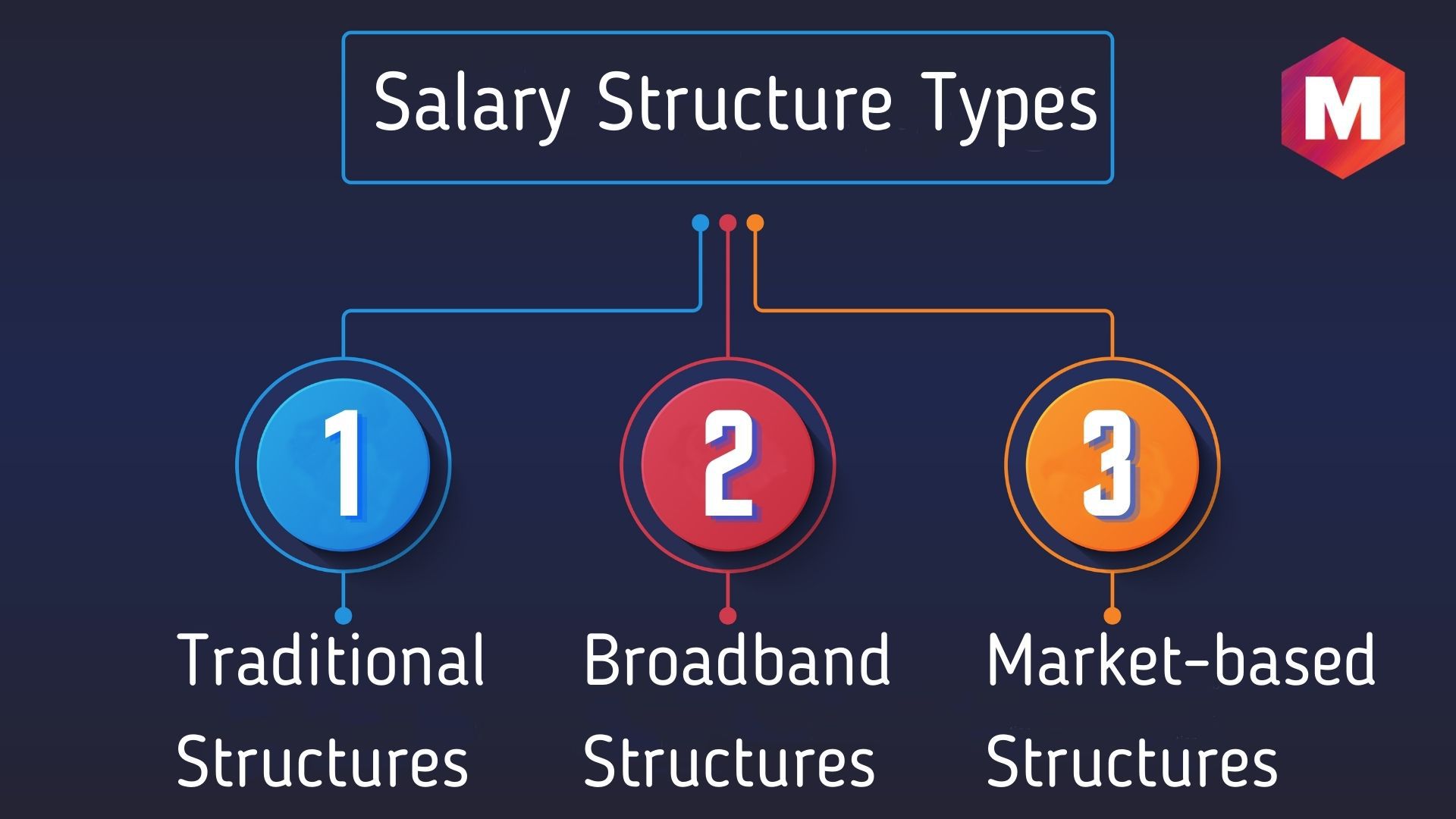Salary structure refers to the system used by employers to determine the compensation of an employee. Also known as pay scale it includes the details in terms of the breakup of different elements that constitute the salary.
Salary structure is a way to define a series of pay grades and the jobs they represent. In other words, the set of parameters that describe a salary is known as the salary structure. A standard structure will include the length of employment, merit, and pay compared to similar job positions.
Salary structure information is considered very important as it decides the net salary, gross salary, hand pay, allowances, bonus, etc.
A salary structure will help the business to manage the salary expenses, retain people, and in recruiting, promotions, and hiring process.
Table of Contents
Salary Structure Components
The salary structure components vary from company to company. Some of the most common ones are
1. Basic Salary
The basic salary is a maximum of 40% of CTC and lays the groundwork for a salary structure. It is a taxable base income. The components of salary structure are referred to as a percentage of basic salary.
2. House Rent Allowance
The house rent allowance ranges between 40% – 50% of the basic salary.
3. Special Allowances
The remaining part of the salary is kept for special allowances. It is taxable and smaller than the basic salary.
4. Leave Travel Allowance
It is the amount of money paid by the employer to his employee for taking a vacation with family within the country. This amount is non-taxable.
5. Provident Fund
12% of the basic salary is kept in the employee provident fund which is a fund for old age or emergency
6. Gratuity
This is a lump sum amount that is paid by the employer to the employee when he retires or resigns
7. Medical Allowance
The medical allowance is paid by the employer to his employee for any medical-related expenses. It is tax-free up to an amount of Rs 15000.
8. Bonus
The bonus is paid as a lump sum amount once a year by the employer to the employee. It is taxable and is based on the employee’s as well as the organization’s performance for that fiscal year.
9. Employee Stock Options
The employee stock options are shares given by business entities to their employees at discounted rates or free to boost employee retention
Types of Salary Structure
The three main types of salary structure a business entity will use is as follows
- Traditional Structures
- Broadband Structures
- Market-based Structures
The type of structure will depend to a great extent on the location of the organization, size of the company, industry to which the organization belongs and employee classification for instance to which group it belongs non-exempt or exempt.
An important thing about the salary structure is that an organization can change it as per the need of the hour. Let us understand the three types of market-based salary structures to determine which one will be able to meet individual needs
1. Traditional Structures
Traditional Structures are types of salary structures that can be divided into several pay grades. The increase in salary or pay levels for jobs is very small between each pay grade.
Traditional salary structures are placed at a second position in terms of popularity and usage by different organizations. According to a survey 24% of companies use this pay grade structure within their organization because it prevents people from surpassing the maximum salary limit too quickly.
Business entities often use various metrics like length of employment and performance to determine the pay raise of an employee. The organizations also set up a minimum and maximum salary range for each employee group to avoid any confusion.
One of the most common examples of a salary range in a Traditional salary structure is
Salary Pay grade 1 pay grade 2 pay grade 3
$30k – $40k $40k – $50k $50k– $60k
2. Broadband Structures
Broadband Structures are flexible salary structures that use fewer pay grades with each grade including a wider salary range if compared with traditional salary structures.
Broadband salary structures are placed in the third position in terms of popularity and usage because only 5% of companies use this pay grade structure for jobs.
The advantage of using a broadband structure for jobs is that companies have more leeway while deciding the salary of an employee. The disadvantage is for employees as it may result in greater pay inequalities.
In some cases, an employee can max out at the top-end and although this looks great at the onset later it might mean dissatisfaction with the company because his pay raise is now no longer good enough to satisfy him
A pay audit is the best way to identify pay discrepancies due to disability, gender, and race.
One of the most common examples of a salary range in a Broadband salary structure is
Salary Pay grade 1 pay grade 2 pay grade 3 pay grade 4 pay grade 5
$30k – $32k $32k – $34k $34k– $36k $36k – $38k $38k – $40k
3. Market-based Structures
Market-based Structures are created by looking at what other employers or competitors are paying their employees. Create a list of positions and their descriptions before doing your research and collecting market data for market pricing.
An external pay audit is the best way to identify and determine the salary ranges and pay levels for each job position. Companies also use Glassdoor or the U.S. Bureau of Labor Statistics to know what employees in similar job positions are earning.
When a survey was conducted it revealed that most of the organizations use market-based structures as 55% of companies use this pay grade structure.
Market-based Structures are a combination of both traditional and broadband salary structures. This is why the salary ranges can be as low as traditional and as high as broadband structure.
One of the most common examples of a salary range in a market-based salary structure is
Salary Pay grade 1 pay grade 2 pay grade 3 pay grade 4 pay grade 5
$30k – $35k $35k – $40k $40k– $45k $45k – $50k $50k – $55k
How to Create a Compensation Structure?
Take the following steps to create a compensation structure
1. Establish value for each job position
The first step in creating a salary structure is to know the value of every job position in your company by conducting a market survey. Competitors can prove a blessing at such times hence you might want to take a look at market pricing to know what the rival brands are paying for similar jobs.
2. Consider the competitive posture of your company
Collect the market data and consider the competitive posture of your organization. Are the overall level of salary rates comparable, below or above the rates of the competitors? Now decide what will be the best for your company a higher, lower or nearly equal pay grade to retain your employees.
3. Describe the compensable leverage for your company
Describe the compensable leverage for your organization by understanding how much more or less are salary increases in your company compared to the market rate increase for higher positions. Strike a balance by initiating an affordable salary range level with lots of promotional opportunities for the jobs.
4. Look at the external inequalities
Are there employees in your company with disproportionate salary rates because both positive and negative inequalities in salaries level may prove harmful for an organization?
5. Develop a salary structure for your company
This is the time to develop a salary structure for your company with the help of all the information you have collected to date. Define a minimum and maximum salary range for each job position or pay grades with multiple job positions.
6. Make sure your employees are at par
A salary structure with pay grades is now in place and now is the time to look at the salary rates of your employees and compare it with minimum and maximum market rates and if necessary make adjustments in salaries for market alignment.
Liked this post? Check out the complete series on Human resources

